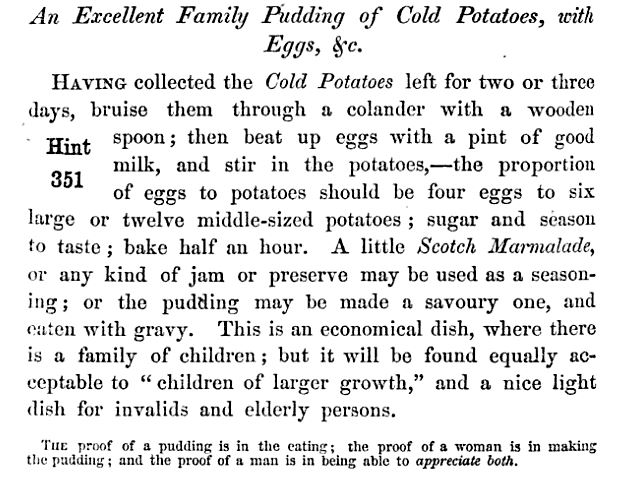
Since I’ve got a bit more time on my hands at the moment, I’ve been busy doing some sewing and trying to get as many unfinished projects done as I can. While I sew, I like to watch something that I’ve seen before so that I can still concentrate on whatever I’m working on.
So there I am, watching ‘Victorian Farm’ and sewing away. It’s the height of the Brisbane summer, so it’s hot and humid. Then suddenly, Peter is making homemade ginger beer and they all drink it and look so cool and refreshed. And so, of course, I had to try making some.
The Recipe

The recipe for ginger beer that I used from Philp, The Family Save-All, 167.
The recipe comes from ‘The Family Save-All’ which is a mid-nineteenth century cookbook all about using up left-overs and cheap ingredients. I’ve used it before, when I was making potato pudding and it’s a great source for cheap, everyday recipes.
The recipe would make an enormous amount of ginger beer, so even though the recipe warns that making a smaller quantity might make an inferior product, I reduced all the ingredients significantly.
Overall, it produced a very fizzy but quite pleasant ginger beer. I would have preferred a stronger ginger flavour and slightly less sugar but it was very refreshing.In the end, I didn’t measure how alcoholic it was, but do be careful because it certainly gave me a bit of a buzz.
The other thing to watch out for is the level of carbonation. If you bottle it after only four days, it will continue to ferment in the bottles. It’s really important that you put it into plastic bottles and that they get refrigerated. Otherwise, you’ll end up like me with ginger beer exploding all over the ceiling!

The Redaction
Ginger Beer
45g ginger
4.85l water
650g sugar
Juice of 1 large lemon
1 tbsp honey
2g lemon essence
1 sachet ginger beer or beer yeast, dissolved in a little water that has been boiled and cooled
1. Sterilise all your equipment. Cut the ginger into chunks, put it in a bag and bruise with a rolling bin.
2. Place the ginger in a large saucepan and add 850ml of the water. Bring it to the boil, and simmer for 30 minutes.
3. Stir the sugar, the lemon juice, and the honey into the hot ginger water, then add the remaining water. Bring to the boil, then strain out the ginger and pour into a 1 gallon demijohn. Allow the mixture to cool until it is just lukewarm.
4. Stir in the lemon essence and the yeast. Set up the airlock and allow to ferment for 4 days.
5. On the fifth day, sterilise your bottles, lids and siphoning equipment. Siphon the ginger beer into plastic bottles, while trying not to disturb the yeast residue. Don’t fill the bottles completely, but leave some space at the top. Press out the air from this space, then cap. As the ginger beer continues to ferment, the bottle will expand. Once the bottles are expanded and hard, you must refrigerate them to keep them from exploding.
Note: This recipe isn’t written for beginner brewers. If you haven’t brewed before, then you should consult a basic guide for how to set up your equipment, do the siphoning etc. This guide is for mead, but I really like how intuitive it is, and it covers a lot of the skills you’ll need.
The Round-Up
The Recipe: Ginger Beer (available here)
The Date: 1861
How did you make it? See above.
Time to complete?: 5 days
How successful was it?: Other than the one bottle that exploded, it was pretty good. As I said, the ginger flavour wasn’t particularly strong and I don’t know if that was the result of reducing the quantities, or if it just wasn’t very strong to begin with.
How accurate?: The big change that I made was omitting the egg white. It was just going to be too difficult to add 1/14 of an egg white. I imagine that the main purpose of the egg white is to help clarify the ginger beer, so I think that it would make more of a difference to the way it looks rather than the taste. The other big difference is the type of yeast that I used, and the way that it was introduced. The recipe didn’t specify, but it was probably a liquid yeast taken from the sludge left from beer brewing, rather than a modern dried yeast.

References
Philp, Robert Kemp. The Family Save-All, a System of Secondary Cookery. Second. London: W. Kent and co., 1861.



